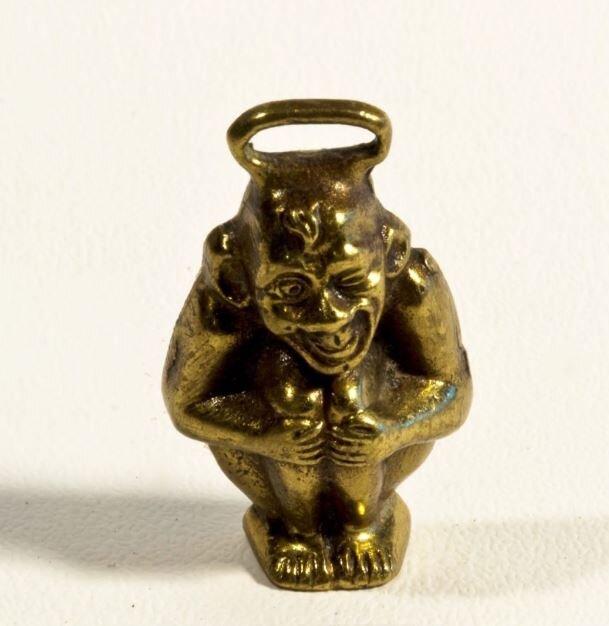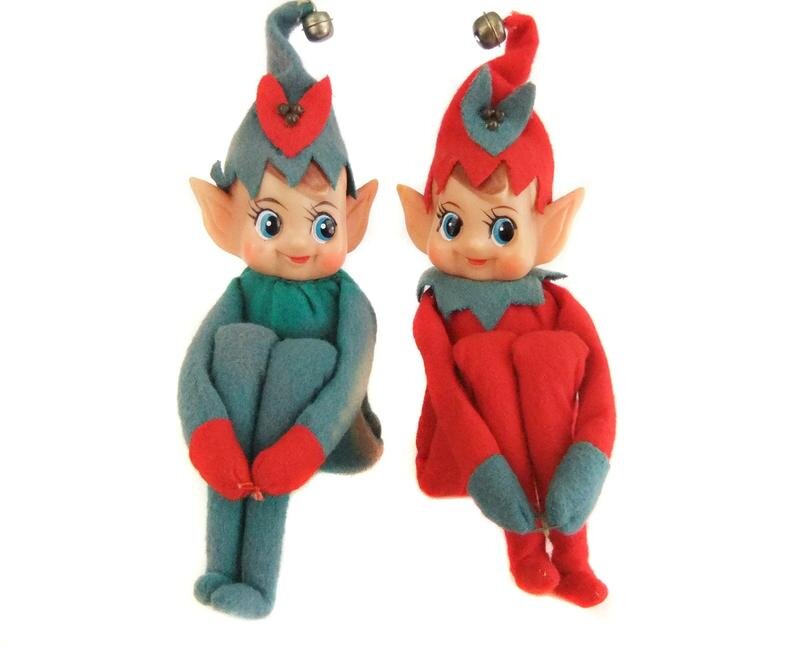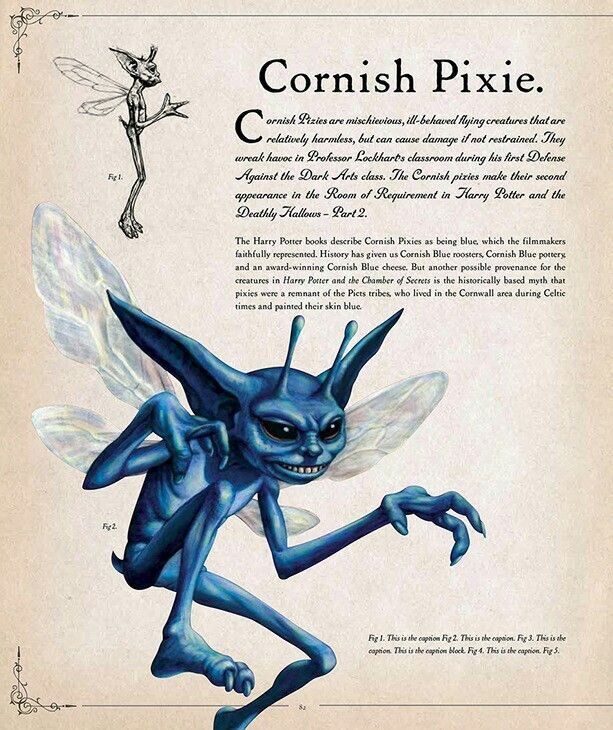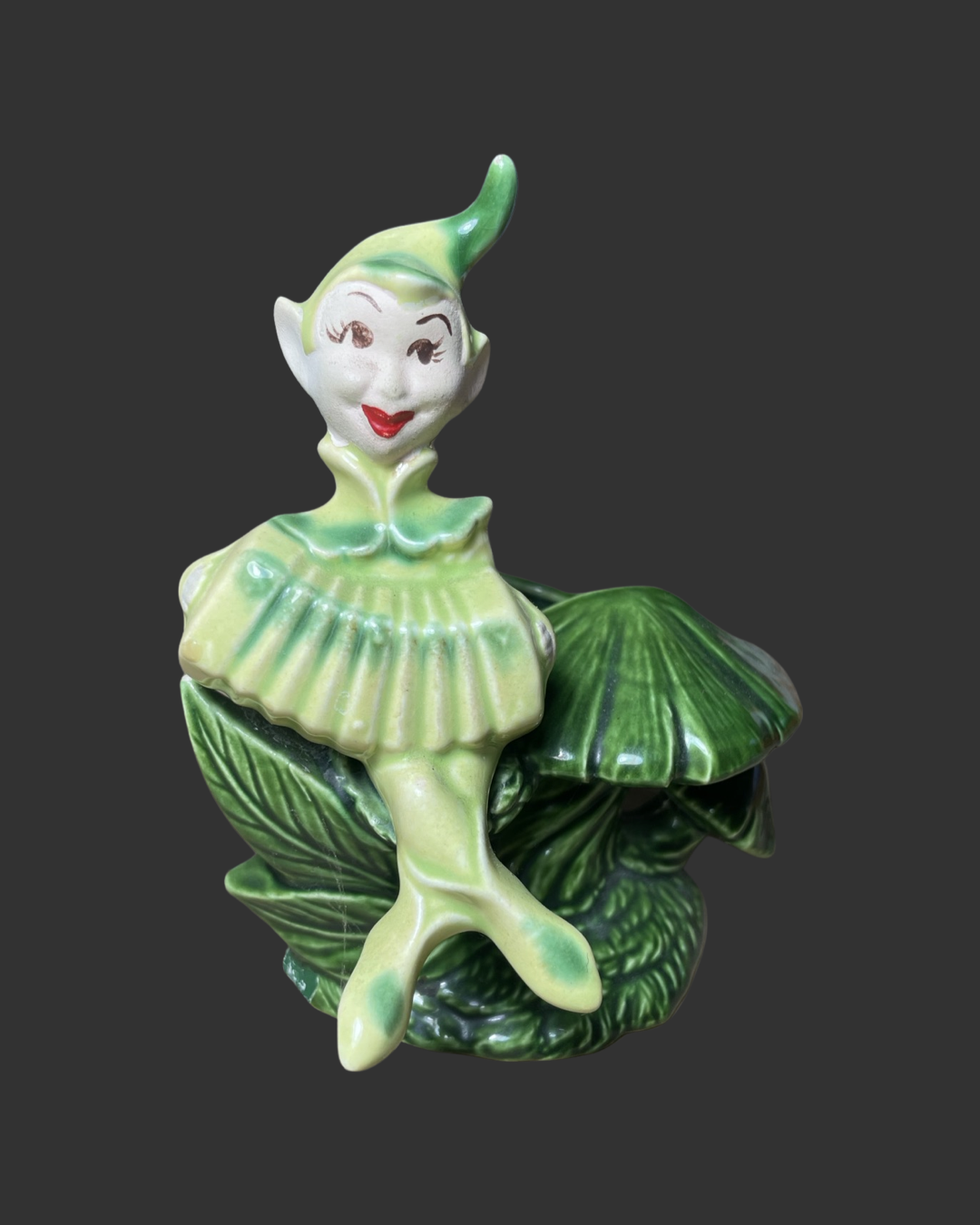Cornish Piskies
A piskie (or pixie or pisky) is a type of mischievous fairy with pointed ears and a haircut like Jean Seberg’s in Breathless (just kidding).
Cornish piskies are piskies from Cornwall, England and have become a popular emblem of the region. The main distinguishing factor between Cornish piskies and piskies from elsewhere is that Cornish piskies do not typically have wings.
The record on these mythical creatures is a little mixed. Some say they are troublesome, while others report that they are helpful with housework. In any event, at some point, the idea that Cornish piskies are lucky took hold.
According to the Museum of Witchcraft and Magic located in (where else?) Cornwall, “Not so long ago almost every Cornish household had some kind of Pisky charm to attract the luck that the good will of the Piskies was thought to bring.” For this reason, souvenirs from Cornwall also feature the piskies prominently.
The queen of the Cornish piskies is Joan the Wad. (“Wad” is an old word for torch.) Being Queen, good luck charms featuring Joan’s nude figure are considered to be particularly powerful. But Joan is relatively unknown outside of the British Isles.
The King of the Devon Piskies is none other than Jack O’ Lantern, and he and Joan together can double one’s good fortune.
Piskies are commonly depicted hugging their knees and are sometimes shown seated on a toadstool, which avid followers of The House of Good Fortune know is itself a symbol of good luck!
Cornish Pixie silver charm, House of Good Fortune Collection.
Pixie seated on Toadstool.
Why do pixies hug their knees?
Astute readers might have noticed that a lot of piskies sit in a particular pose — seated with bent legs and the knees pulled into their chest. Body language experts say that this can be an attempt at self-soothing; others say it’s a good way to stretch the lower back.
Whatever the reason, something about this pose must have really resonated because knee-hugging pixies were mass produced in the 1950s and 1960s in Japan. These mid-century pixies were much cuter than the traditional Cornish piskies and became popular exports. Because of their resemblance to elves, these so-called “knee huggers” became popular Christmas decorations and are still collectible today.
Elves or Pixies? Is there a difference?
Knee-hugging pixie, Napcoware, House of Good Fortune Collection.
Pointy-eared pixie climbing on a toadstool, House of Good Fortune Collection.
Pixies with Wings
Thanks to Disney’s marketing magic, Tinkerbell from J.M. Barrie’s Peter Pan is arguably the world’s most famous pixie. A pretty young girl with a blond topknot, green dress and wings, her magical dust enables Peter and the other children to fly. By contrast, the Cornish Piskies in the Harry Potter books/films are thin, blue insect-like beings. Some say their blue color is based on an old myth that pixies are remnants of the Picts tribes, who lived in Cornwall and painted their skin blue using a substance called woad.
(above) Cornish Pixie (the Harry Potter series)
(right) Tinkerbell (Disney)
For those gentle readers who wish to go deeper on the topic of pixies, The House recommends The Fairy Folklorist, who has assembled a wealth of information and images on these charming fay folk, and this incredible collection of Joan the Wad memorabilia.
And finally, a few more pixies from the collection…
Pixie playing a concertina and sitting on a toadstool, House of Good Fortune Collection.
Female Pixie Figurines, House of Good Fortune Collection. While these are technically not Joan the Wad, The House likes to think they represent her.















